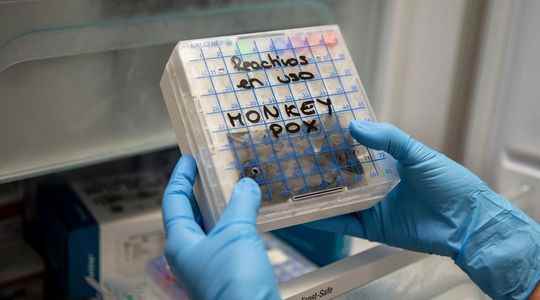A man under the age of 40, living in Europe, who has sex with men, with rashes all over his body and fever. This is the most common profile of a person with monkeypox, according to statistics from the World Health Organization (WHO). However, this is only a crude portrait, the profile of which is representative of that of the majority of patients.
With 81.6% of the 6,027 cases recorded worldwide, Europe remains by far the region most affected by the current wave of cases of monkeypox, detected in May 2022 outside the countries of Central Africa and the West where the virus is endemic. Germany, the United Kingdom and Spain are the most affected countries in the world, with more than 1,000 cases each. France had 498 cases as of July 6, according to figures from the European Center for Disease Prevention and Control (ECDC).
WHO statistics reveal that 99.5% of patients who provided their sex are men, with a median age of 37 years. Furthermore, 60% of sufferers who have provided information about their sexual orientation – about a third of the total number of people affected – identify as homosexual, bisexual or other men who have sex with men, according to the report.
WHO ‘worried about scale and spread of virus’
Known in humans since 1970, monkeypox is considered to be much less dangerous and contagious than its cousin, smallpox, eradicated in 1980. Monkeypox, a disease that the WHO wants to rename, is generally cured by itself after two or three weeks.
WHO Director Dr. Tedros Adhanom Ghebreyesus announced on Wednesday July 6 during a press briefing in Geneva that a meeting of the WHO Emergency Committee on the subject would be held later this week. of July 18. At its previous meeting on June 23, the Committee had refused to raise the current outbreak of cases to the rank of “public health emergency of international concern”, the highest level of alert of the organization.
“I continue to be worried about the scale and spread of the virus” which now has more than 6,000 cases in 58 countries, Tedros Adhanom Ghebreyesus said on Wednesday. “Testing remains a challenge, and it is very likely that there are a significant number of cases that are not identified,” said Dr. Tedros. “In Africa, cases are emerging in countries that were previously unaffected, and record numbers are being seen in places that have previously had to deal with monkeypox,” he added.
